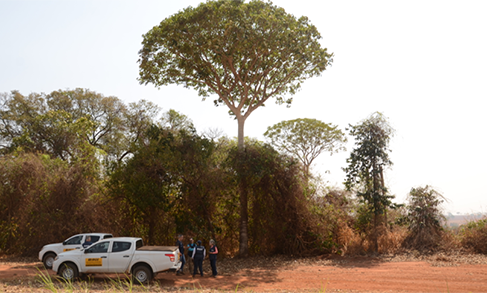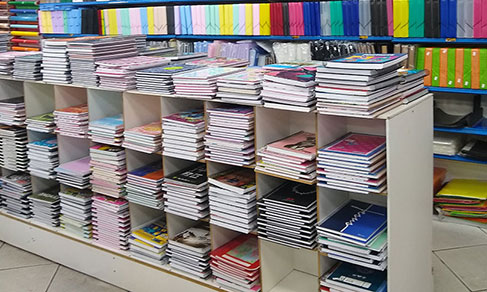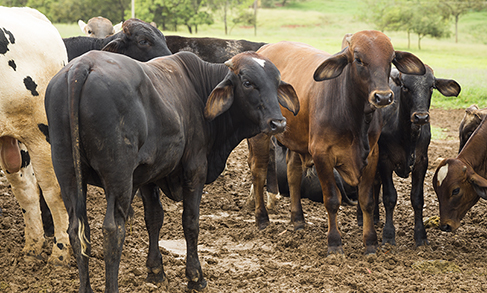Agricultural production
September´s estimate expects harvest of 250.9 million tonnes in 2021
October 07, 2021 09h00 AM | Last Updated: October 08, 2021 11h01 AM

According to the September estimates of the Systematic Survey of Agricultural Production (LSPA), released today (7) by the IBGE, the national harvest of cereals, legumes and oilseeds should reach 250.9 million tonnes in 2021. It is the sixth consecutive month of drop in the monthly estimate. With the September´s figure, the output should stay 1.3% below that obtained in 2020, which hit the record of 254.1 million tonnes.
Carlos Barradas, manager of the survey, explains that the decline in the production of grains is mainly due to the lack of rainfall in producing states, which jeopardized corn. “Brazil is facing a water crisis. The amount of rainfall is quite below what is usually expected. As soybean was planted and harvested with a delay, the planting window of the second crop of corn, which comes right after the soybean harvest, shrank. As a result, it became more dependent on fair climate conditions and, as the rainfall did not come, the output of this harvest reduced,” says the researcher.
Beyond the lack of rainfall, Barradas mentions the occurrence of frosts in other areas producing corn. “Unlike the Central-West, the climate in the South is more unstable. This year, the winter was more severe and Paraná, for example, was hit by frosts, which jeopardized the crops in that state,” states him. Besides Paraná, São Paulo, Minas Gerais and Mato Grosso do Sul also registered losses in the production of the second crop of this grain due to the cold climate.
By adding up to 86.3 million tonnes, corn should have its output reduced by 16.4% in relation to the total harvested last year. For the second crop, which represents 70.2% of the total output of corn, the estimate is that the production falls 21.0%. In relation to the previous estimate, released last month, the decline is of 2.0%, caused by the drop in the output in some states like Goiás (-3.5%), Paraná (-6.7%), São Paulo (-24.1%) and Minas Gerais (-10.1%).
“The planted area of the second crop of corn in Brazil grew 8.5% in relation to the previous year, i.e., the producers planted more and, nevertheless, lost 21.0% of the production,” says Barradas. Corn, rice and soybeans are the three major products in the group of grains. These three grains represent 92.4% of the production estimate and account for 87.7% of the area to be harvested.
Sugarcane, whose output should reach 628.5 million tonnes (-7.3%), was another crop that declined over the previous year. The manager of the survey explains that the dry weather that hit the producing regions this year jeopardized the sugarcane crops. “Most of the production of sugarcane is not irrigated. So, it is a crop that suffers with the lack of water and, as a result, it was quite affected by the climate,” says Barradas.
As the major producer of sugarcane in Brazil, São Paulo should account for nearly half (49.9%) of the total produced and hit 313.6 million tonnes. In Paraná, the production estimate dropped 1.7% in September, whereas it increased 1.4% in the Northeast in relation to August. The region is responsible for 8.6% of the national output, with a growth of 3.1% over the previous year, which represents more 724.9 thousand tonnes.
The dry weather in São Paulo also jeopardized the production of oranges. By reaching 13.6 million tonnes, the output of this fruit should stay 13.8% smaller against last year. The drop in São Paulo, which accounts for 70.7% of the national output of oranges, should be of 18.9%. As a result, the estimate is that Brazil produces 332.7 million 40.8-kg boxes, a drop of 7.2% in relation to what was estimated in the previous month.
On the other hand, the production estimate of soybeans continues to increase. In 2021, this grain should reach a record of 134.0 million tonnes, an increase of 0.2% over the previous forecast and of 10.3% in the comparison with the total produced last year. “Soybean is, by far, the highlight in the Brazilian output in 2021. The dollar remains high and the prices of commodities remain good. It encourages the agriculture in Brazil, since a large part of it is exported,” analyzes him.
The positive figure is especially related to the recovery of the production in Rio Grande do Sul, which grew 80.8% over the previous year, when crops in this state were hit by a long period of drought. Other states that stood out in the increase in the output of soybeans in the September´s estimate were Mato Grosso (0.9%) and Rio Grande do Sul (0.1%).
The output of wheat should also surpass the total harvested last year, in spite of the decline of 0.6% in relation to the last estimate. 8.1 million tonnes of this commodity should be produced, an increase of 31.0% over 2020. “This is a very good output. Wheat has been planted and the weather has helped. Paraná and Rio Grande do Sul are the major producers of wheat and it has rained there,” completes Barradas.
Production in Central-West and Southeast should drop in 2021
Two out of five Major Regions should decline their output this year. The Central-West, which accounts for 45.7% of the national production of grains, should have its output reduced by 5.8%. In 2020, the region produced 121.7 million tonnes, whereas it should hit 114.7 million in 2021. The output in the Southeast should fall 2.6% against the total produced last year, when it added up to 25.7 million tonnes.
The South (5.4%), Northeast (1.7%) and North (1.3%) should increase their output. Among the Federation Units, Mato Grosso leads with a share of 28.5%, followed by Rio Grande do Sul (15.0%), Paraná (13.3%), Goiás (9.2%), Mato Grosso do Sul (7.7%) and Minas Gerais (6.1%), which, together, represented 79.8% of the national overall.
The first forecast of the IBGE for the output of grains in the 2022 harvest will be released on November 11. The second and third forecasts are scheduled for December 9 this year and January 11, 2022, respectively.
About the LSPA
Launched in November 1972 aiming at addressing the demand of users for monthly short-term statistical information, the Systematic Survey of Agricultural Production - LSPA provides estimates of planted area, harvested area, amount produced and average yield of products selected based on criteria of economic and social importance for Brazil. It does not only monitor each crop investigated in the calendar year of reference, from the intention to plant up to the end of the harvest, but also presents the harvest forecast for the coming year, with surveys in the months of October, November and December. Please access the data on Sidra.




















